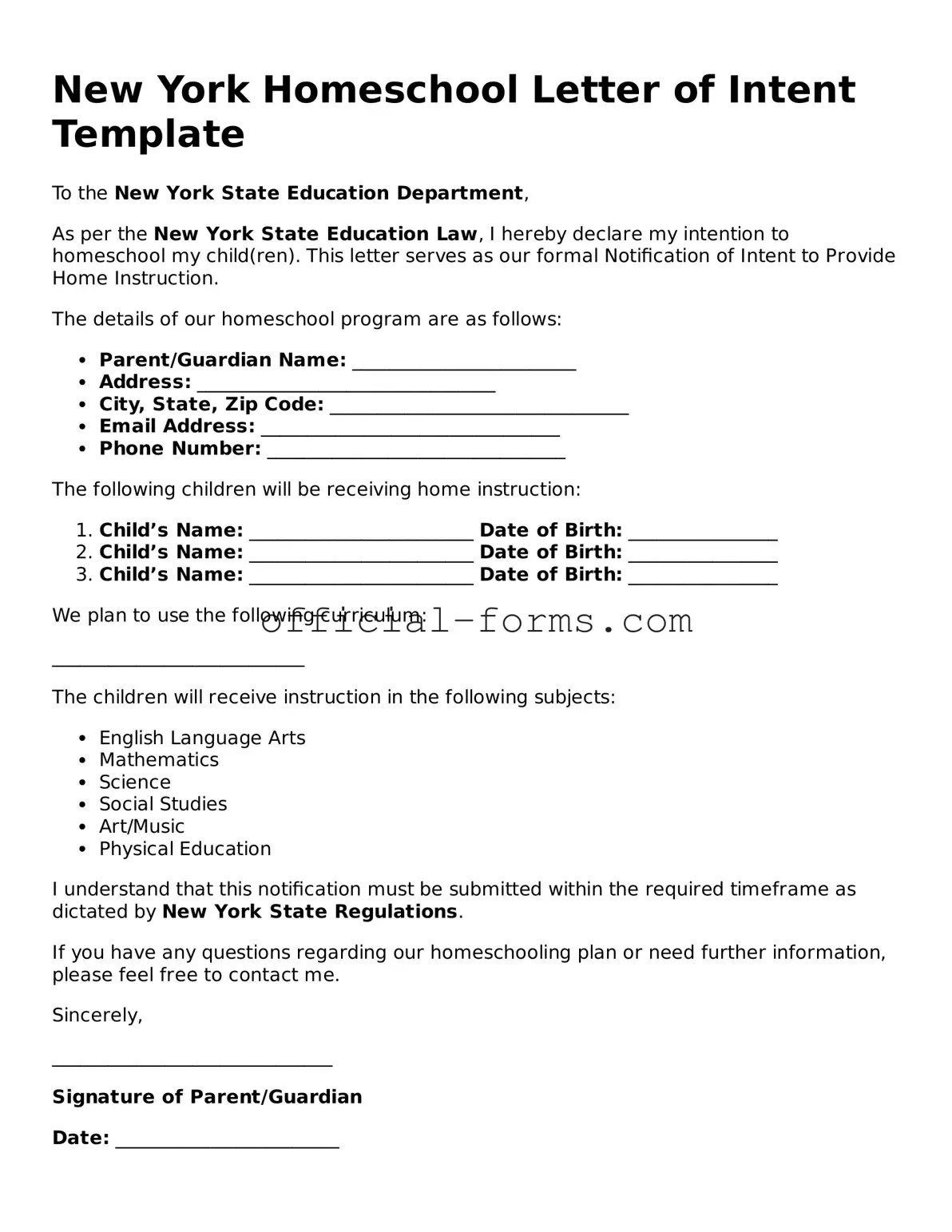Filling out the New York Homeschool Letter of Intent form requires careful attention to detail. One common mistake is failing to include all required information. The form asks for specific details about the student, such as their name, age, and grade level. Omitting any of this information can lead to delays or rejection of the application.
Another frequent error is not signing the form. While it may seem trivial, a signature is necessary to validate the document. Without it, the submission is incomplete. Parents should double-check that they have signed the form before submitting it.
Many people also overlook the importance of submitting the form by the deadline. The New York State Education Department requires that the Letter of Intent be filed by July 1 for the upcoming school year. Missing this deadline can result in complications and may affect the ability to homeschool legally.
Inaccurate information can be another pitfall. Parents might mistakenly provide incorrect details about their educational plans or the curriculum they intend to use. This can lead to misunderstandings and may require additional communication with the school district.
Some individuals fail to keep a copy of the submitted form. It is crucial to retain a record for personal reference and to provide proof of submission if needed in the future. Without a copy, parents may find themselves in a difficult position if questions arise later.
Additionally, not notifying the local school district of the intent to homeschool can create issues. While the form serves as the official notice, some districts may have specific procedures that need to be followed. Ignoring these can lead to complications.
Another mistake involves not updating the form if there are changes in the student's educational status. If a child changes grade levels or if there are changes in the curriculum, parents must submit an updated Letter of Intent. Failing to do so can lead to non-compliance with state regulations.
Lastly, some parents underestimate the importance of thoroughness in their educational plans. The form often requires a description of the proposed curriculum. Vague or incomplete descriptions can raise concerns from school officials. Providing detailed and clear information about educational goals and methods is essential.
